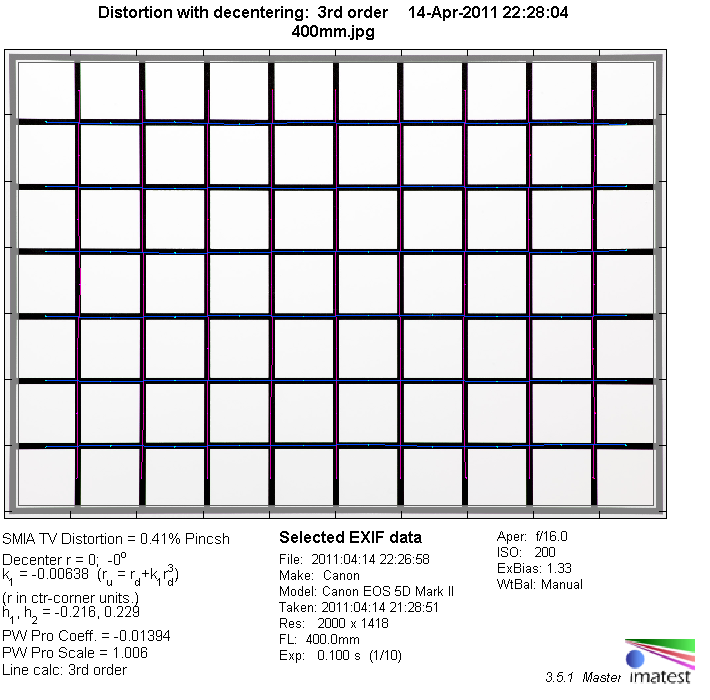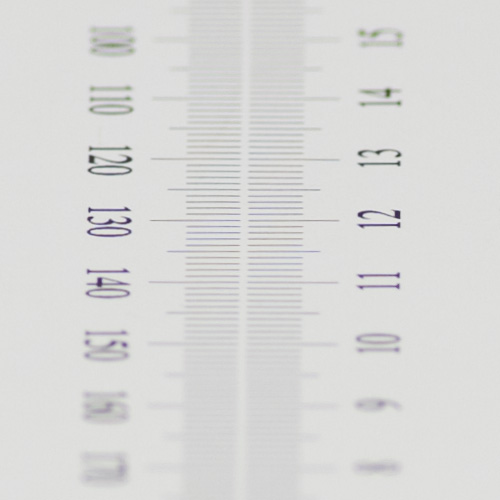|
Canon EF 400mm f/5.6 USM L - Full Format Review / Test - Analysis |
|
Lens Reviews -
Canon EOS (Full Format)
|
|
Page 2 of 3

Distortion
As to be expected from a prime lens there's only a minimal amount of distortion (pincushion-type) which is basically negligible at just ~0.4%.

Vignetting
There's only a marginal amount of light falloff at max aperture and beyond it's barely detectable anymore even in lab conditions. This is much better than what we've seen from zoom lenses at this setting.

MTF (resolution)
The resolution characteristic of the Canon lens is very decent albeit not stellar with respect to its peak performance in the image center. Regarding its small max. aperture it reaches its best performance already at "large aperture" settings. It is capable of providing very even and very good results here. Diffraction effects have a slight impact at f/11 and, of course, more so at f/16.
Please note that the MTF results are not directly comparable across the different systems!
Below is a simplified summary of the formal findings. The chart shows line widths per picture height (LW/PH) which can be taken as a measure for sharpness.
If you want to know more about the MTF50 figures you may check out the corresponding Imatest Explanations
Chromatic Aberrations (CAs)
Similar to most other tele fix-focal lenses chromatic aberrations (color shadows at harsh contrast transitions) are very low and nothing to worry about.

Bokeh
Due to the small max. aperture the out-of-focus blur is somewhat underdeveloped. Nevertheless you can achieve a small depth-of-field using a long focal length in conjunction with a close object distance - which is often the case when "shooting" wildlife.
The quality of the bokeh is pretty good and we expected no less than that, of course. That said out-of-focus highlights are rendered somewhat less than perfect. They are circular at f/5.6 and that's across most of the full format image frame BUT you can spot some "onion-like" sub-structures in the inner highlight zone. The non-circular aperture blades get also obvious when closing the aperture.
 On the positive side we've a very smooth foreground and background blur which is among the best that we've seen so far.
On the positive side we've a very smooth foreground and background blur which is among the best that we've seen so far.

Bokeh Fringing / Longitudinal Chromatic Aberrations (LoCA)
LoCAs (non-coinciding focal planes of the various colors), sometimes called "bokeh CAs", are slightly visible at f/5.6 so the SUD/UD elements cannot suppress them even at this rather moderate aperture. There are still visible traces at f/8, less so at f/11. That said we haven't really noticed significant issues here during our field time with the lens.
|
Move the mouse cursor over the f-stop marks below to observe the respective LoCAs
|
| f/5.6 |
f/8 |
f/11 |
|

|
|